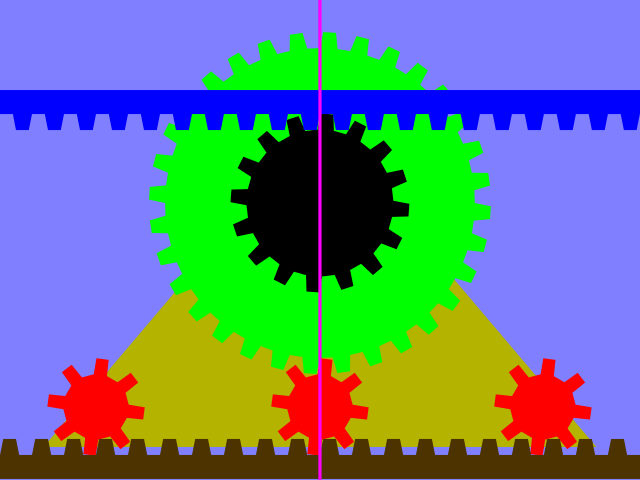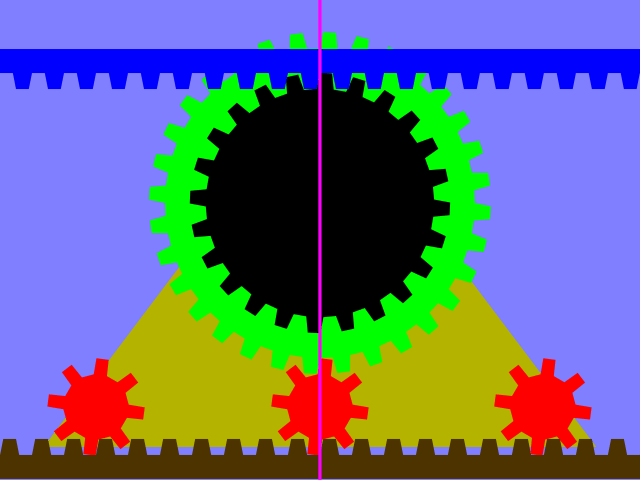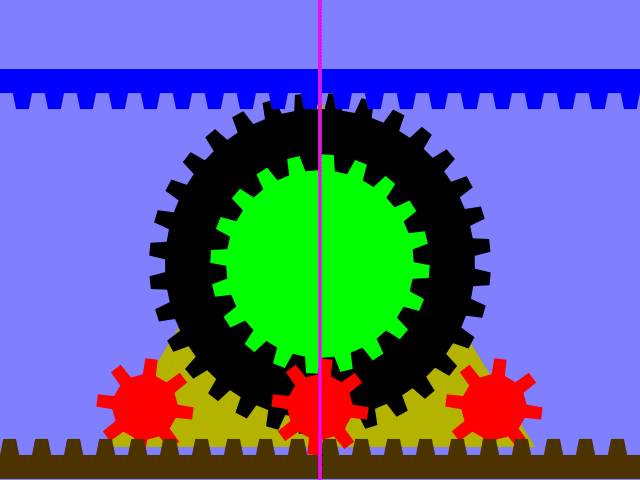Sunday, November 07, 2010
Faster Than The Wind
Some guy posted a video a while back of a little RC wind car he'd made which could go straight down-wind faster than the wind, leading to rather a lot of drama and bad epistemology. (A shameful day for "scientists" indeed. More need to learn to tell the difference between understanding why something isn't true and not understanding why it is.)
Really, it ought to be fairly obvious that it can be done, even before knowing how to do it. There is a differential in motion between two objects (the wind and the ground) which means there is energy that can be extracted, regardless of how fast you are moving relative to either of them. It's just a matter of how to do it.
The way it does work is a bit counter-intuitive to be sure. In particular, when the cart is going faster than the wind, it is the ground that is driving the wheels and those in turn the propeller, so that the propeller is actually pulling the cart down wind faster than the wind. (This is the opposite from a cart which drives straight upwind, where the wind is driving the propeller which drives the wheels which push the cart forward via the earth.)
Having made sense of that, I wanted to make a little animation to illustrate it. (I failed to find any animation software that would run on my currently-outdated OS, so I wrote an animation library today from scratch. Sigh.)
Note that a propeller is pretty much like a gear locked into the wind--just a worm-gear instead of a round gear, and with some slip instead of locked in, but the basic principles are the same. (You can imagine a propeller inside the black gear below, pointing to the right. The tips of the propeller would slip through the black notches at the top and bottom, with the pitch of the propeller following the notch backward as the blade passes through it.) The theoretical top speed is proportional to 1/(1-g) where g is the gear ratio (green to black), so again counter-intuitively, the lower the gear ratio (the closer to 1:1), the faster the cart will go. The motive force is inverse to that, however, so is quickly overcome by friction if the ratio is too low. [If the ratio passes 1:1, the sign of the top speed changes (coming back from infinity on the other side), and the cart starts driving upwind instead of downwind.]
Without further ado, the blue strip at the top represents the wind blowing to the right, and the cart here is completely passive (you could build this and it would travel faster than you move the blue strip):



Get it?
[Update: this guy wins on effort to results ratio.]
[Update 2, Dec 5: even better video by same guy.]